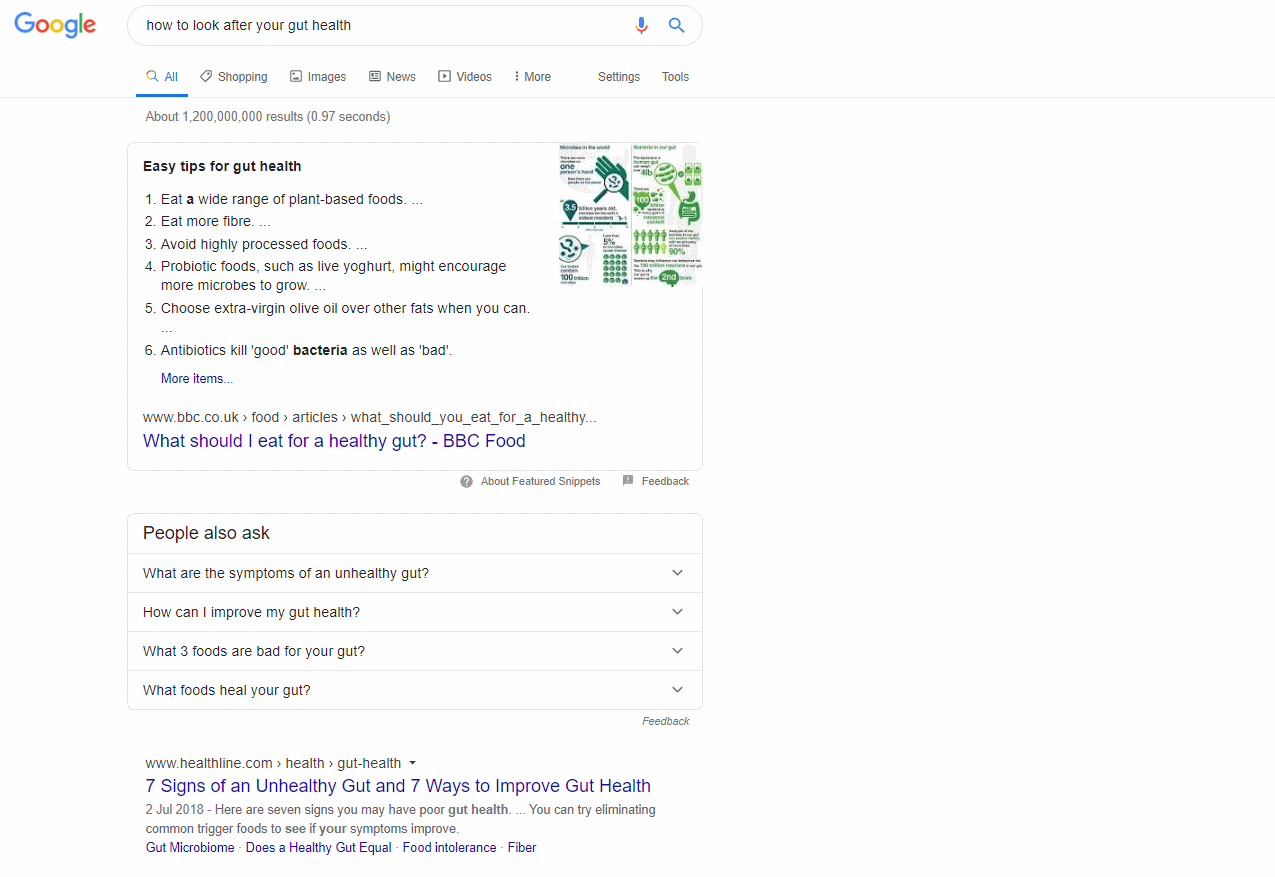1. Content objectives: what’s the point of it all?
The first step is to ask yourself: what are you trying to achieve? I’m not talking about Facebook shares, likes or even organic rankings. I want to know what goals you are working towards as a business. Content production is too often detached from these ambitions, and it shows. Brand-owned blogs are usually a muddled mess of posts that have been bashed out just to hit publishing quotas.
But who is this method helping? The truth is, it could be wasting your business’s valuable resource. Instead, I urge you to take a second and realign your content efforts with your business goals – from there, things will soon start to make more sense.
Consider the following and how your content could contribute:
- Company mission statement – why do you do what you do?
- Vision – what are your biggest goals?
- USPs – what makes you different, and what value can you add?
- Business objectives and financial targets – what are the current priorities?
Better is a charitable social enterprise committed to delivering a better quality of fitness and leisure, libraries and performing arts facilities for everyone. Therefore, every piece of content they produce must help to work towards these commitments. Once established, we can set measurable objectives to monitor progress.
To use them as an example, we can look at Better’s mission statement:

Using this to inform a strategy, here’s what a simple content measurement plan might look like:
| Objective | How? | Measurement plan |
|---|---|---|
| Engage and welcome new participants | Optimise for new awareness stage keywords to gain visibility with new audiences Distribute in relevant online communities | Traffic and on-page engagement Visibility and social engagement |
| Ensure everyone can participate | Accessible website Offers detail and is tailored to varied audiences | On-page engagement Reviews |
| Sustain participation | CTA to read relevant articles or hub content CTA to get in touch Links to relevant product guides CTA to sign up to newsletter | Clicks on CTA, subsequent pageview |
2. Audience research: what do the people you want to reach care about?
Do you know what your most valuable customers want and need? If not, find out. Audience insights are so valuable when developing your content strategy.
Don’t have any audience research? You can find data from a variety of sources:
- Existing content performance data – what’s already working?
- Focus groups with a sample of your target audience
- Interviews with existing customers
- Surveys to existing and target customers
- Interviews with sales and customer service teams
- GA affinity categories
- Product and company reviews – both positive and negative!
Use these insights to build a list of relevant topics and categorise them by priority based on your goals and objectives.
For example, for a health insurance brand, a guide to improving mental health might be our top priority because it does the following:
- aligns with their brand and product
- has the potential to reduce premiums
- serves the intent of high demand queries
- fills a gap in the content landscape
3. Competitor analysis and ideation: what are you up against and how can you compete?
Use your list of topics to establish a clear picture of the competition. This will almost always be a combination of direct and indirect competitors (which include companies that you might not have ever even considered). While these might not seem useful, it’s important to analyse the entire content landscape exactly how your target audience sees it.
For example, a health food supplement’s blog might compete against other health food providers and supermarkets. But it will also compete against lifestyle publications, bloggers and fitness brands as well as government resources like NHS.uk.

Analysing the landscape by topic – as opposed to simply looking at what your traditional competitors are doing – helps you spot more opportunities and better understand the type of information your target audience needs.
What are you looking for when analysing competitor content?
A simple review of the competitive landscape is not enough. To figure out how best to compete, you’re going to need to refer to your business objectives, your unique proposition and value adds, plus those specific audience requirements.
This is a task best tackled as a team – gather a few people in a room to bounce ideas around and narrow down a plan of attack for each topic.
4. Content audit: what have you already got and how can you make the most of it?
If you’ve previously invested time, money and energy into content production, you’ll likely be able to repurpose a good chunk of it.
A simple content audit at this stage will ensure your prior efforts don’t go to waste.
By now, you should be able to look at your existing content with fresh eyes and group it by topic, type and objective. Assess the value of each asset according to your new plan of attack. This way you can decide what to improve, kill or consolidate.
| Topic recommendation | Priority Score /5 (search demand, difficulty, intent, relevance) | Format recommendations | Existing. content | Action |
|---|---|---|---|---|
| Improve mentalk health | 5 | Video and expert commentary | example.com/blog/5-tips-to-improve-mental-wellbeing | Improve existing |
| How to get kids active | 5 | Listicle with downloadable assets | example.com/resources/kids-exercise-reward-chart | Repurpose existing |
| Does weightloss improve health | 4 | Curated guide with data vis | example.com/blog/running-for-weightloss | Link to existing |
5. Implementation and distribution plan
Now for the most vital step: execution.
Getting from strategy to execution is possibly one of the most challenging steps because it involves so many people, priorities and timings. That’s why it’s so crucial to spend time building a robust implementation plan that sorts all that out for you.
My advice is to get everyone into a room or onto a shared document and agree the following:
- Publish date & review date
- Author & Approver(s)
- Objective & KPIs
- On-page optimisation – title, H1, target terms, FAQs
- Format
- Existing assets
- CTA
- Distribution
6. Measure and learn
Finally, it’s time for a spot of self-reflection: measuring metrics, analysing performance and learning from failure and success. If you followed step one, you should be able to assess your content based on the objectives you set. Depending on the goal you were trying to achieve, you can take a critical look at the data and see the extent to which you achieved it.
To make this process as easy as possible, we collate content performance insights into bespoke, human-readable data studio reports as well as schedule regular sessions to review progress as a team.

Every piece of content shouldn’t just exist; it should aim to enforce action from the reader. Their journey shouldn’t stop until some sort of conversion has occurred. That’s why this final stage is so imperative.
If your content is doing what you wanted it to do, perfect! Celebrate those successes. But if it isn’t, don’t bury your head in the sand. Be brave, dig into the reasons this might be happening, communicate your findings and optimise from there. Sometimes, it takes trial and error to get it right, and your content (as well as your team’s approach) will only improve as a result.
If you’re interested in learning more about how content strategy can benefit your organisation, don’t hesitate to get in touch!
